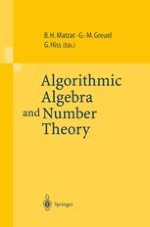This book contains 22 lectures presented at the final conference of the Ger man research program (Schwerpunktprogramm) Algorithmic Number The ory and Algebra 1991-1997, sponsored by the Deutsche Forschungsgemein schaft. The purpose of this research program and of the meeting was to bring together developers of computer algebra software and researchers using com putational methods to gain insight into experimental problems and theoret ical questions in algebra and number theory. The book gives an overview on algorithmic methods and on results ob tained during this period. This includes survey articles on the main research projects within the program: • algorithmic number theory emphasizing class field theory, constructive Galois theory, computational aspects of modular forms and of Drinfeld modules • computational algebraic geometry including real quantifier elimination and real algebraic geometry, and invariant theory of finite groups • computational aspects of presentations and representations of groups, especially finite groups of Lie type and their Heeke algebras, and of the isomorphism problem in group theory. Some of the articles illustrate the current state of computer algebra sys tems and program packages developed with support by the research pro gram, such as KANT and LiDIA for algebraic number theory, SINGULAR, RED LOG and INVAR for commutative algebra and invariant theory respec tively, and GAP, SYSYPHOS and CHEVIE for group theory and representation theory.
